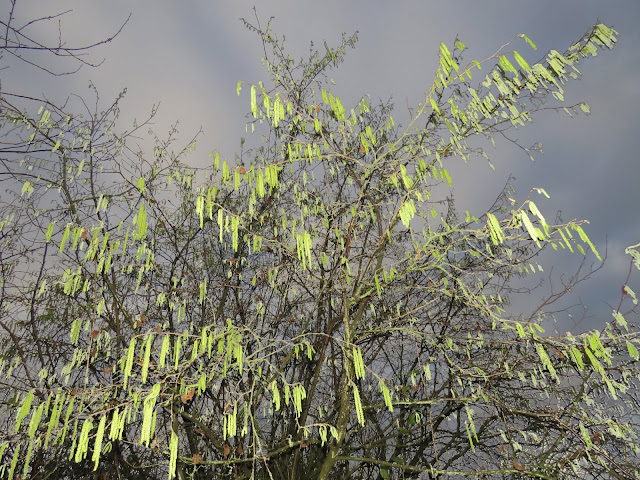A Hazel in January
rounding winter's grey corner
I'm sprayed in the face with paint
yellow points splatter my retinas
and then drip
drops trailing vertical paths
like a thousand star speckled
wagtails bursting out of the sun
so impossibly bright tassels
rind of lime as tinsel
a burning hazel bush that
sears everything around it
its catkins strung
between earthed dull gravity
and a skyfull of living things
wanting to live
~~~~~~~~~~~~~~~~~~~~~~~~~~~~~~~~~~~~~
It may well sound like I'm going way over the top about this catkin festooned hazel.
But it stopped me in my tracks. This gets me every year - but miraculously more so every year.
I doubt that I'd have been more moved by seeing the Mona Lisa. I'll even admit to welling up a bit. It just seemed to have every spring I've ever seen encapsulated in those early January catkins.
Just spring coming round again, nature doing its thing, without fuss of fanfare (except from me!), and life wanting to live.
 |
| Male catkin with the tiny red female flower just to the right of it. Hazel is monoecious - both male and female flowers are found on the same tree. |
 |
| The tiny, easily overlooked female flower. Hazel is wind pollinated. once pollinated by wind, the female flowers develop into oval fruits - hazelnuts |
 |
| hazel bark |
 |
| hazel leaf |
 |
| The autumn leaves go a beautiful golden colour |
 |
| Frosty hazel |
 |
| Hazel Leaf bud - oval, blunt and hairy - a bit like some people |


Comments
Post a Comment